AI-Enhanced Digital Art: Top Software
The advent of artificial intelligence in digital art software has precipitated a transformative shift in the creative landscape, offering artists unprecedented tools to augment their craft. Among these, a select group of platforms stands out for their sophisticated AI capabilities, including, but not limited to, algorithmic composition, style transfer, and iterative design assistance.
These systems not only automate certain aspects of the artistic process but also challenge traditional notions of creativity, as they wield the capacity to learn from vast datasets and even mimic the intricacies of human artistry.
As we consider the implications of such advancements, one must ponder the extent to which these technologies can enhance or disrupt the artistic paradigm. Furthermore, exploring these innovative tools’ key features and potential applications reveals a horizon brimming with possibilities, beckoning the professional community to scrutinize AI’s evolving role in digital art.
Key Takeaways
- AI-powered digital art software represents a paradigm shift in the creative landscape.
- AI art generators harness the capabilities of artificial intelligence (AI) to craft images.
- AI algorithms facilitate the customization of outputs to suit specific project requirements.
- Machine learning revolutionizes digital art by providing novel ways to generate and manipulate imagery.
Revolutionizing Creativity With AI
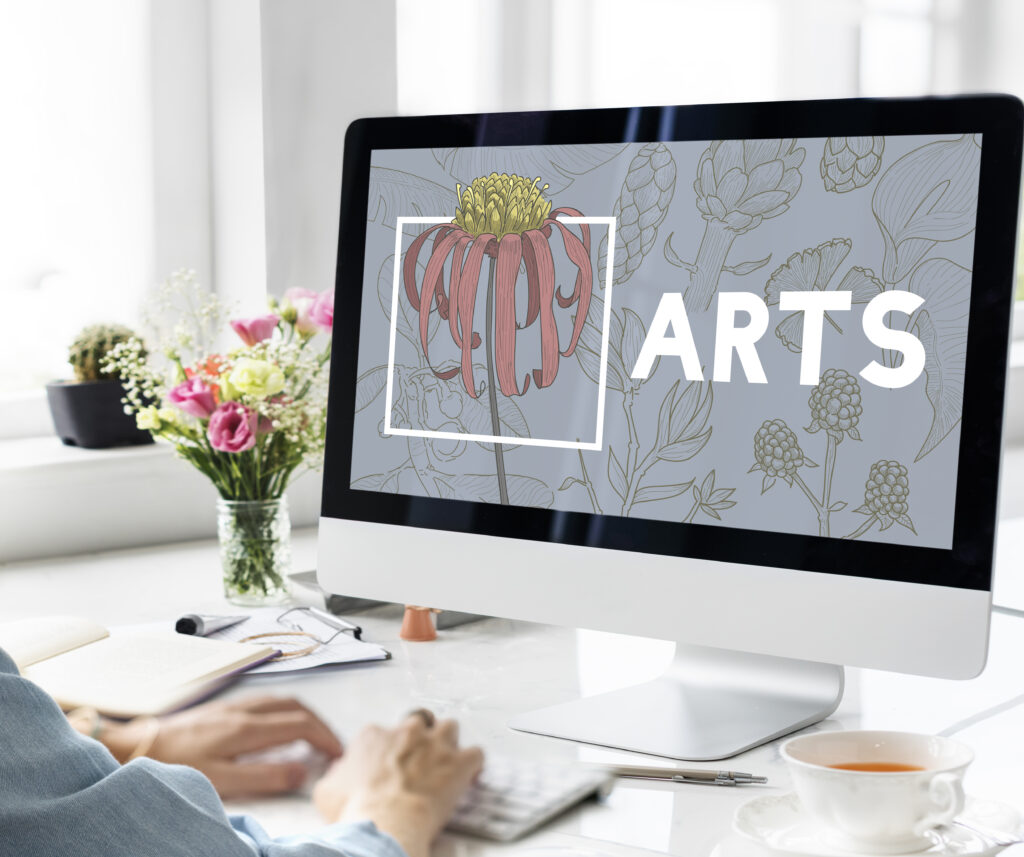
The advent of AI-powered digital art software represents a paradigm shift in the creative landscape, opening unprecedented avenues for artistic expression and design. AI art generators harness the capabilities of artificial intelligence (AI), specifically through machine learning and generative AI techniques, to craft images that range from the hyper-realistic to the very abstract. By training on vast datasets of image-text pairs, these systems have learned to interpret and visualize concepts across various artistic styles, revolutionizing creativity.
Diffusion models like Stable Diffusion and DALL·E 2 exemplify the innovative use of AI in image generation, transforming random noise into detailed pictures aligned with user prompts. Generative Adversarial Networks (GANs), such as VQGAN-CLIP and BigGAN, further demonstrate the dynamic nature of AI artistry, pitting two neural networks against each other to refine the output.
Integrating AI art generation into platforms like Canva democratizes access to these tools, enabling users to leverage text-to-image functionalities for diverse design tasks. Innovations like Jasper Art, Bing Image Creator, and Craiyon underscore the varied possibilities that generative AI offers, each contributing unique features that expand the horizons of digital creativity.
Key Features of AI-Driven Art Software
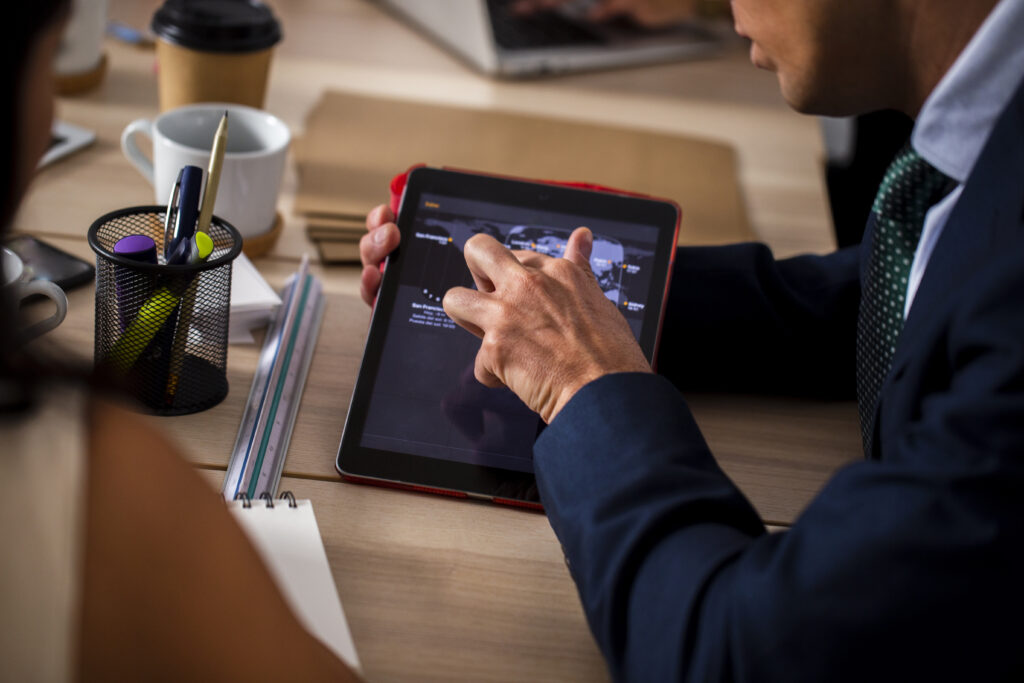
AI-driven art software is distinguished by its ability to transform textual descriptions into intricate visual representations, leveraging vast datasets and advanced algorithms such as diffusion models and GANs. These AI art generators excel at generating images from elaborate text prompts and interpreting and visualizing abstract concepts by synthesizing visual elements. The process involves machine learning techniques where the software is trained on numerous image-text pairs, enhancing its capability to create images that align closely with user intentions.
Using an AI art image generator like DALL·E 2 or Midjourney, users can input different prompts, specify styles, and harness editing tools to refine the outcome. The AI interprets the text prompts, employing a blend of pre-learned patterns and creative algorithms to generate unique visual content. These platforms often allow for various styles, enabling users to craft artwork that ranges from photorealistic depictions to surreal and abstract forms.
Creating images with AI art software has become more accessible with integrations into popular design platforms such as Canva. This has democratized AI art, providing templates and user-friendly interfaces that support different inputs, from novice users to professional designers seeking to incorporate AI-generated visual elements into their work.
Enhancing Efficiency in Digital Art
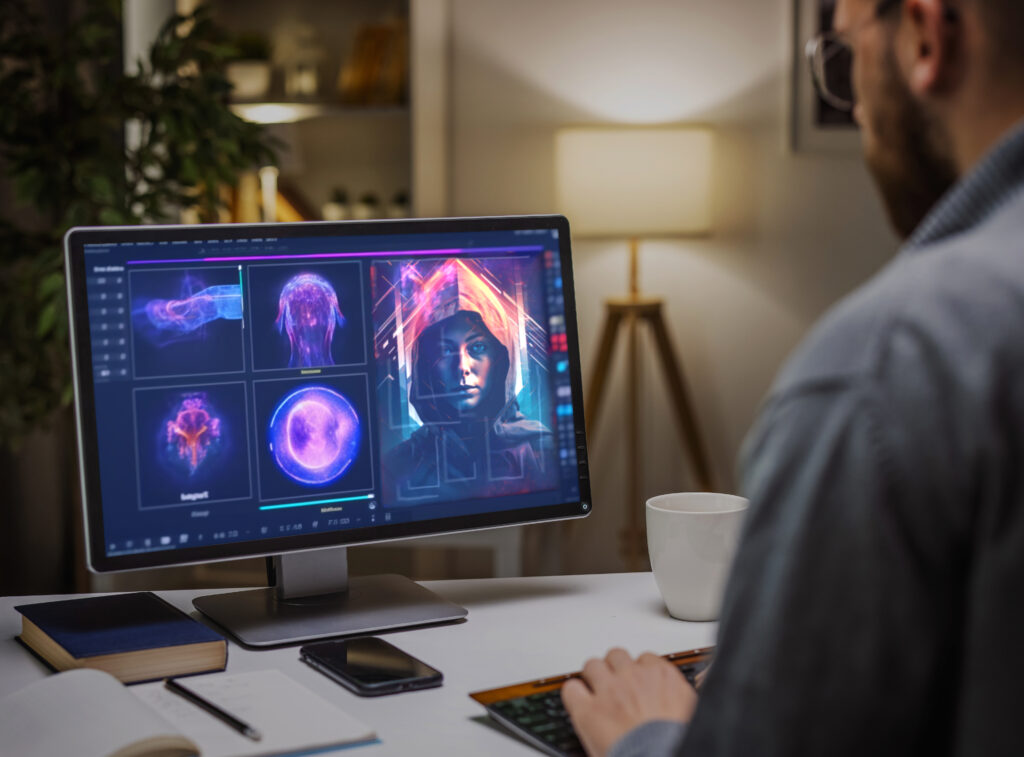
By harnessing AI art generators’ capabilities, artists and designers can significantly expedite the creative process by turning text-based prompts into detailed visual artworks with remarkable efficiency. These AI tools leverage machine learning and advanced graphics cards to interpret and visualize concepts, generating images that reflect various styles and aesthetics.
Utilizing AI art generators like DALL·E 2 and Prodia, creatives have a spectrum of choices that streamline the journey from conception to realization.
Integrating AI algorithms into art software has introduced diffusion models and generative fill techniques, enabling artists to create new compositions rapidly. This evolution in digital art facilitates not only the generation of complex images but also the customization of outputs to suit specific project requirements. The AI image generator’s adaptability makes it a valuable resource for professionals aiming to produce high-quality visuals consistently.
Moreover, the creative workflow can seamlessly integrate with collaborative platforms such as Slack, Airtable, and Canva using AI art generators. This interconnectivity ensures that creating and sharing digital art is efficient and conducive to teamwork and project management.
When selecting an AI tool, factors like user-friendliness, customization capabilities, and the fidelity of the generated images are paramount in enhancing digital art efficiency.
The Role of Machine Learning
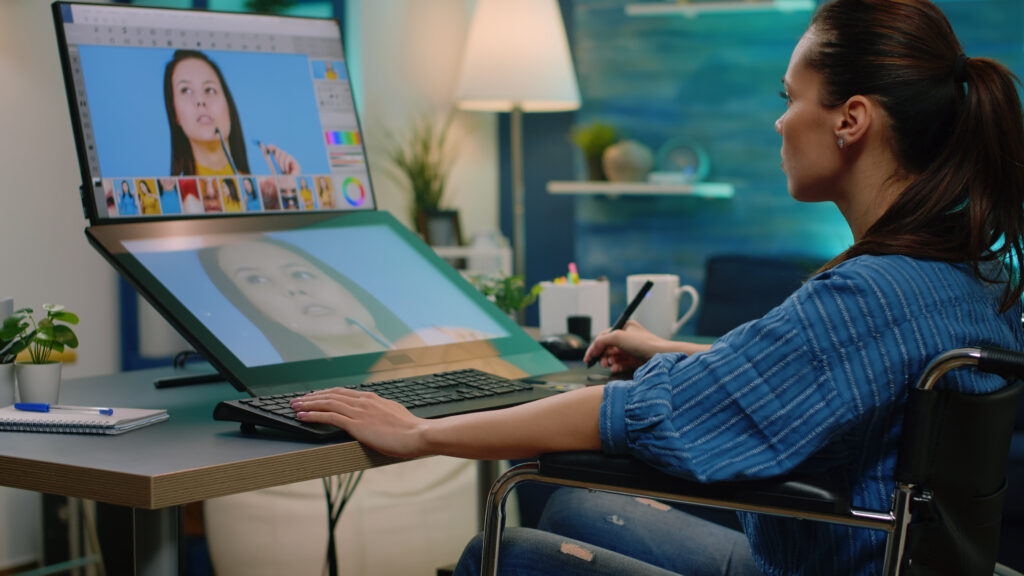
Machine learning is at the forefront of revolutionizing digital art, offering tools that enhance creative processes by providing artists with novel ways to generate and manipulate imagery.
These adaptive learning tools continuously evolve, leveraging vast datasets to refine AI-driven design capabilities, thus expanding the boundaries of artistic possibility.
However, this rapid evolution also requires critically examining the ethical implications of using pre-existing artwork in training AI models.
Enhancing Creative Processes
Integrating machine learning into digital art software marks a transformative shift in how artists conceive and execute their creative visions. AI art generators, like Stable Diffusion and DALL·E 2, are redefining the boundaries of digital art by enabling the generation of new, complex visual narratives. These AI-powered art tools leverage vast datasets to produce creative outputs that range from text effects to creating realistic images, thus enhancing creative processes.
| AI Uses | Impact on Creativity |
|---|---|
| Generate new visual concepts | Fosters innovative ideas |
| Creating realistic images | Expands artistic realism |
| Free to use text-based inputs | Accessible creative tools |
AI image generators offer artists a powerful new spectrum of creative tools, where machine learning is not just a facilitator but a collaborator in the artistic journey.
Adaptive Learning Tools
Adaptive learning tools are a significant advancement in educational technology. They utilize sophisticated machine learning algorithms to customize the learning experience for individual students. These tools are infused with AI capabilities and are increasingly relevant in digital art software. They serve various functions, such as improving art generators. Adaptive learning enhances art generators, often used to create lifelike visuals. Additionally, the image generator learns from input to refine text-to-image transformations. It also analyzes user behavior to tailor features and suggestions to the artist’s style and preferences.
AI-Driven Design Evolution
In digital design, machine learning serves as the backbone of AI-driven evolution, continuously refining the ability of software to interpret and visualize complex text prompts into detailed images. AI art generators, such as DALL·E 2, exemplify the pinnacle of this evolution by leveraging models like GANs to create realistic visuals and diverse styles from simple descriptions. The transformative impact of AI image generators extends to image editing, where traditional photo editors are enhanced with AI capabilities, embodying the AI Time Machine concept by generating new, innovative designs.
| Feature | AI Art Generators | Image Editing |
|---|---|---|
| Core Technology | GANs, Diffusion Models | AI-enhanced tools |
| Output Type | Text-to-image | Photo manipulation |
| Style Capability | Multiple styles | Realistic edits |
| User Input | Text prompts | Base images |
AI-driven design evolution marks a significant leap in creative potential, offering artists and designers unprecedented tools for expression and experimentation.
AI and the Future of Artistry
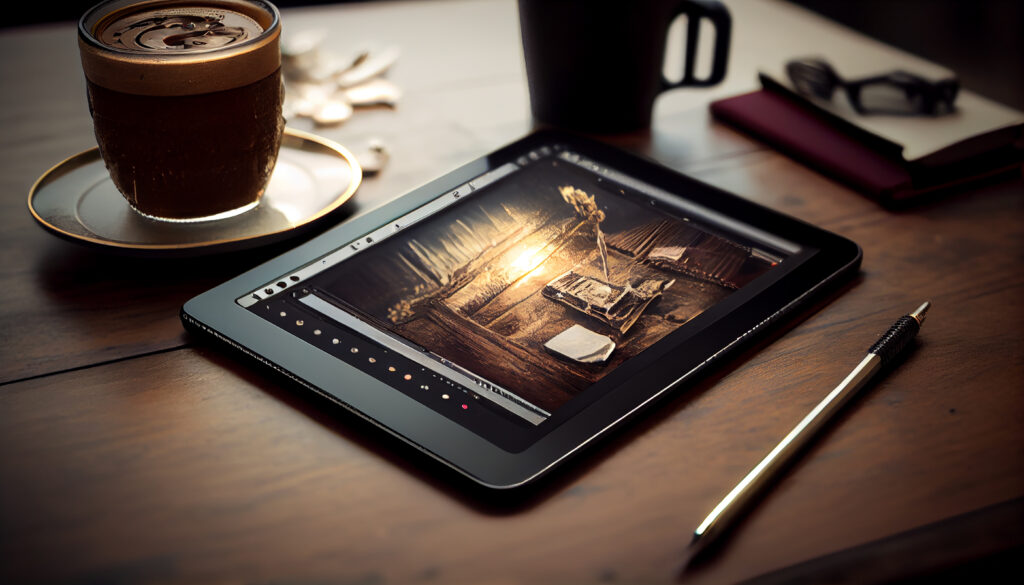
AI’s transformative influence on the creative process heralds a new era in artistry, where the boundaries between human imagination and machine execution become increasingly blurred. AI art generators, like Stable Diffusion and DALL·E 2, are at the forefront of this revolution, enabling artists and non-artists alike to generate images that were once confined to the limits of human skill and time.
- AI Art Generator Overall Impact:
- Democratization of artistic creation, making art accessible to those without traditional art skills
- Increased efficiency in producing visual content for various industries
- Ethical considerations and debates around originality and copyright
AI image generators have sparked a paradigm shift in how we conceive and create visual media. With tools like Generative Adversarial Networks (GANs) and the AI Time Machine, users can create professional-looking artwork that resonates with personal and commercial audiences. The future of artistry is poised for further transformation as these technologies evolve:
- Generative Techniques:
- Deep Dream Generator: Visual complexity that mimics the intricacies of the human subconscious
- GANs: Evolving algorithms driving hyperrealistic or novel aesthetics
- Integration and Application:
- Integration with communication platforms like Slack and Airtable
- Expansion into other creative fields beyond static images
The path forward suggests a symbiotic relationship between AI and human creativity, where AI is both a tool and collaborator in art-making.
Exploring AI Software Options
Having established the profound impact of AI on the future of artistry, let’s examine the range of available AI art generators and their distinct functionalities. These generators are incredible tools for artists and non-artists, leveraging complex algorithms to produce striking AI images. With the ability to generate multiple images from simple text prompts, these platforms have democratized creative expression.
DALL·E 2 stands out with its integration capabilities, allowing users to generate images directly within collaborative tools like Slack. This seamless incorporation enhances productivity and inspires creativity in communication. Similarly, combining Airtable with DALL-E and Zapier can automate the creation of images for database records, showcasing how an AI art generator integrates with business workflows.
Here’s a brief comparison of some of the best AI image generators:
| AI Art Generator | Key Feature |
|---|---|
| DALL·E 2 | Slack integration for generating images from text |
| Prodia | Advanced diffusion models for high-quality AI images |
| StarryAI | Text-to-image AI with a focus on abstract and ethereal styles |
| Bing Image Creator | Microsoft’s entry with AI Time Machine feature |
| Leap AI | Offers a free trial and excels in user-friendly interfaces |
Each platform provides unique capabilities, ensuring a suitable AI image generator for every creative need and technical proficiency.
AI-Powered Design Tools Unveiled
The advent of AI-powered design tools marks a significant evolution in digital art software. These tools bring forth advanced features like Smart Brush capabilities, which allow for nuanced editing and creation with a level of precision previously unattainable.
These tools not only learn from vast datasets to interpret and execute complex design requests but also come equipped with interface enhancements that streamline user interaction. This fosters an intuitive, creative process, making it easier for artists and designers to bring their visions to life.
As a result, artists and designers are now equipped with unprecedented resources. These resources enable them to execute their visions efficiently while exploring new realms of digital aesthetics.
Smart Brush Features
Innovative Brush Features represent a significant advancement in digital art software, leveraging artificial intelligence to enhance creative workflows with efficient, context-aware tools. These features transform how artists and designers create art and use image generators.
- Intelligent suggestions and automated enhancements:
- Color Correction: AI art generators analyze images per the context, suggesting optimal color adjustments.
- Texture Application: Smart Brush Features intuitively apply textures, elevating the visual appeal.
- Composition Adjustments: Generators provide composition recommendations, streamlining the design process.
Intuitive Interface Enhancements
Intuitive Interface Enhancements in contemporary digital art software represent a paradigm shift, as AI-powered tools provide artists with intelligent design suggestions and automated workflow optimization. These enhancements make it easy to navigate complex tasks, allowing for the creation of visually appealing designs without the steep learning curve often associated with advanced software.
With context-aware recommendations, artists can generate multiple design iterations quickly, leveraging the best AI image generator capabilities within the tools available. Intelligent object recognition and style suggestions facilitate a simple-to-use yet robust environment for editing images. The generator refers to the AI’s ability to produce varied artistic elements, adapting layouts to enhance visual impact.
Intuitive interface enhancements thus empower designers to use an AI art assistant that accelerates productivity while elevating creative potential.
Streamlining Workflows With Intelligence
Incorporating AI art generators like DALL·E into platforms like Slack and Airtable has revolutionized automating visual content creation, streamlining workflows, and enhancing productivity with minimal manual input. These generators have become integral in transforming natural language prompts into realistic images, bolstering the efficiency of digital art software.
- AI art generators:
- Automatically create visuals from text-based triggers in Slack and Airtable
- Leverage powerful AI algorithms to interpret and visualize concepts
- Integration with other Adobe products could further optimize creative suites
AI solutions like DALL·E, Prodia, and StarryAI are redefining content generation through their ability to generate complex visuals. These tools use advanced machine learning and robust processing power to automatically create images from descriptions, significantly reducing the time and expertise traditionally required.
- Streamlining workflows:
- Enhance efficiency by minimizing the need for manual image editing
- Facilitate rapid prototyping and ideation with instant visual outputs
- Customize and refine art to generate tailored results for specific projects
In conclusion, the adoption of AI-driven art generation tools is a testament to the power of intelligent software in streamlining creative processes and unleashing new possibilities in art and design.
- Productivity and creativity:
- Foster innovation with the ability to generate diverse artistic interpretations
- Provide scalable solutions for high-volume content creation
- Deliver consistently high-quality and realistic images suitable for professional use
FAQs
How does RunwayML empower artists with AI capabilities?
RunwayML is a toolkit that enables artists to integrate machine learning models into their creative workflows. It supports various models, including GANs and style transfer networks, for generating AI-driven art.
Can Deep Dream Generator be used for AI-enhanced digital art creation?
Yes, Deep Dream Generator uses neural networks to enhance and modify images with dreamlike visual effects. Artists can apply AI-powered filters to transform their digital artworks in unique and surreal ways.
What is DALL-E, and how does it contribute to AI-driven digital art?
DALL-E, developed by OpenAI, is a GAN-based model that generates unique images based on textual prompts. It allows artists to input descriptive text and receive AI-generated visuals, expanding creative possibilities.
Are there other digital art software tools incorporating AI for various creative purposes?
Yes, several other tools are incorporating AI for creative purposes. These include Artbreeder for image blending, DeepArt.io for style transfer, and various plugins and filters that use AI algorithms for digital art enhancement.
How can artists integrate AI capabilities into their digital art workflows?
Artists can integrate AI capabilities by exploring plugins, tools, and software that support AI features. Platforms like RunwayML provide easy-to-use interfaces for incorporating machine learning models into creative projects.